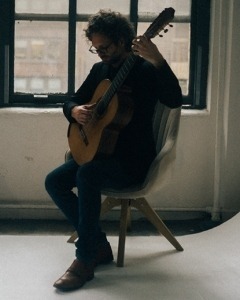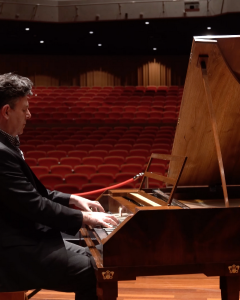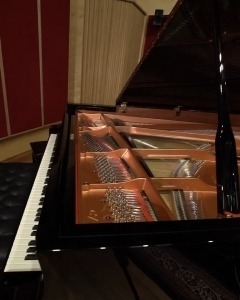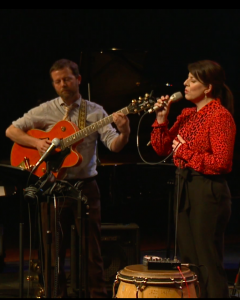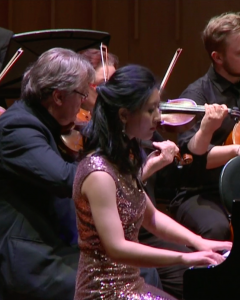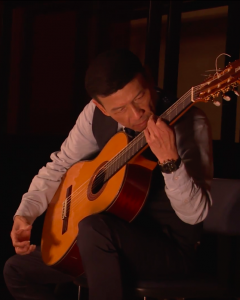McNulty (Stein)
Provenance
Fortepiano
Paul McNulty (Divisov, Czech Republic, 2008)
Copy of an instrument by Johann Andreas Stein (Ausburg, 1788)
Instrument
Collection
Johann Andreas Stein’s so-called ‘Viennese’ action dominated piano design in Vienna and South Germany from the 1770s through to the 1850s. Pianos with the Viennese action continued to be made through World War I.
The distinguishing feature of the Viennese action is the suspension of the leather-covered hammer in a fork (called the kapsel), set into the rear of the key. When the key is depressed, the beak end of the hammer shank catches under the hook of the sprung ‘prell’ lever. The hammer is allowed to travel almost all the way to the string, and at the last moment the prell flips back and the beak leather slides up the face of the prell, effecting the escapement. The hammer rebounds from the string, and (in later versions) is caught by the leather of the backcheck until such time as the key is released, allowing the whole cycle to be repeated. The action is extremely subtle and responsive.
The Stein piano has wooden kapsels, and no backcheck. It is double-strung throughout. Knee levers operate the dampers.
Mozart was enthusiastic about Stein's pianos, judging them to be the best that he had ever encountered. This instrument is a copy of the original made by Stein in 1788, and now housed in the Würtemburgishe Landesmuseum, Stuttgart.
Paul McNulty is regarded as one of the finest living fortepiano makers. A Texan by birth and graduate of the Peabody Conservatory in Baltimore, he maintains his workshop in Divišov, Czech Republic. His pianos are represented in keyboard collections around the world and have featured on many significant recordings.
This instrument was commissioned by the ANU and entered collection of the ANU Keyboard Institute in 2008.
Pitch: A430






